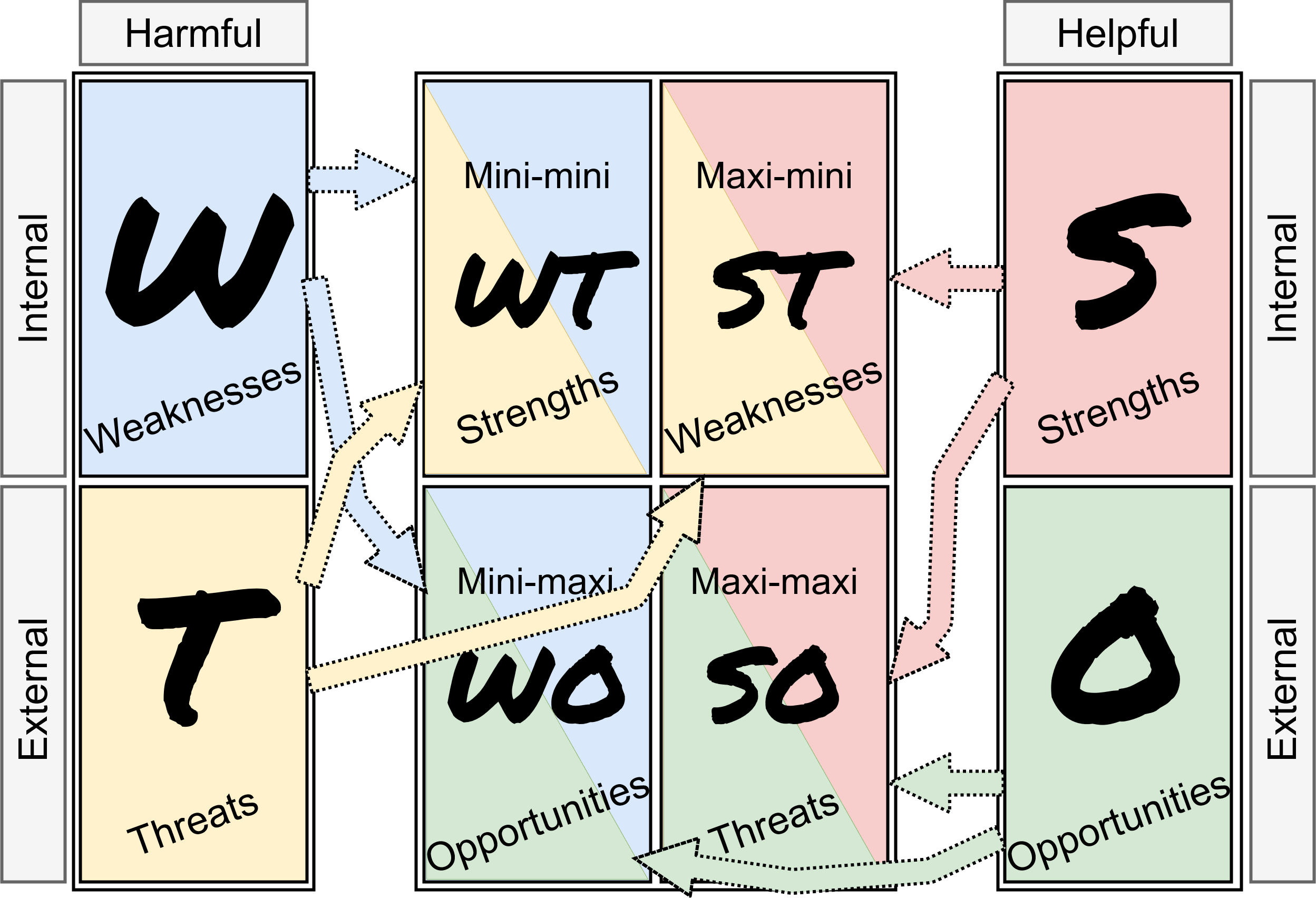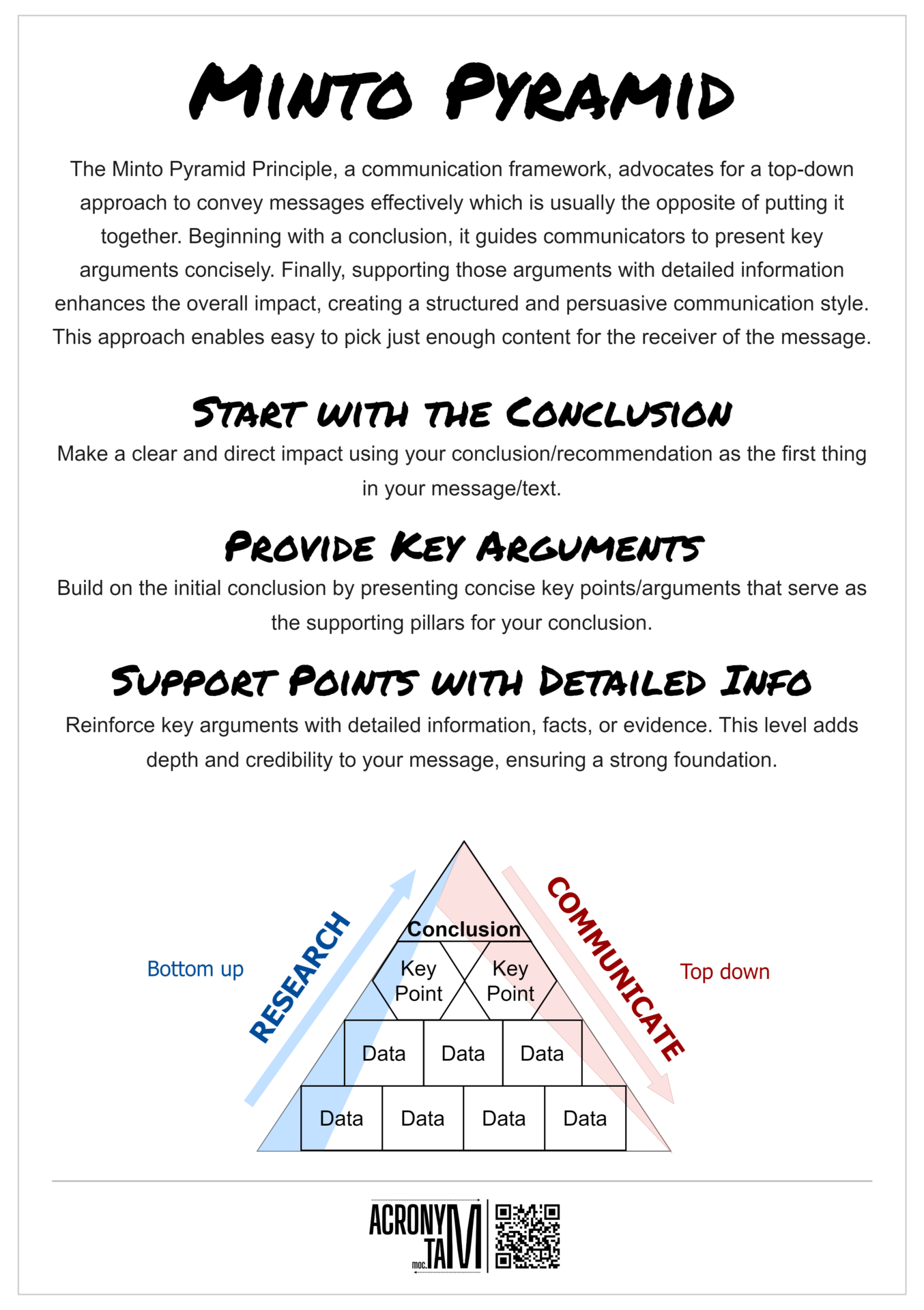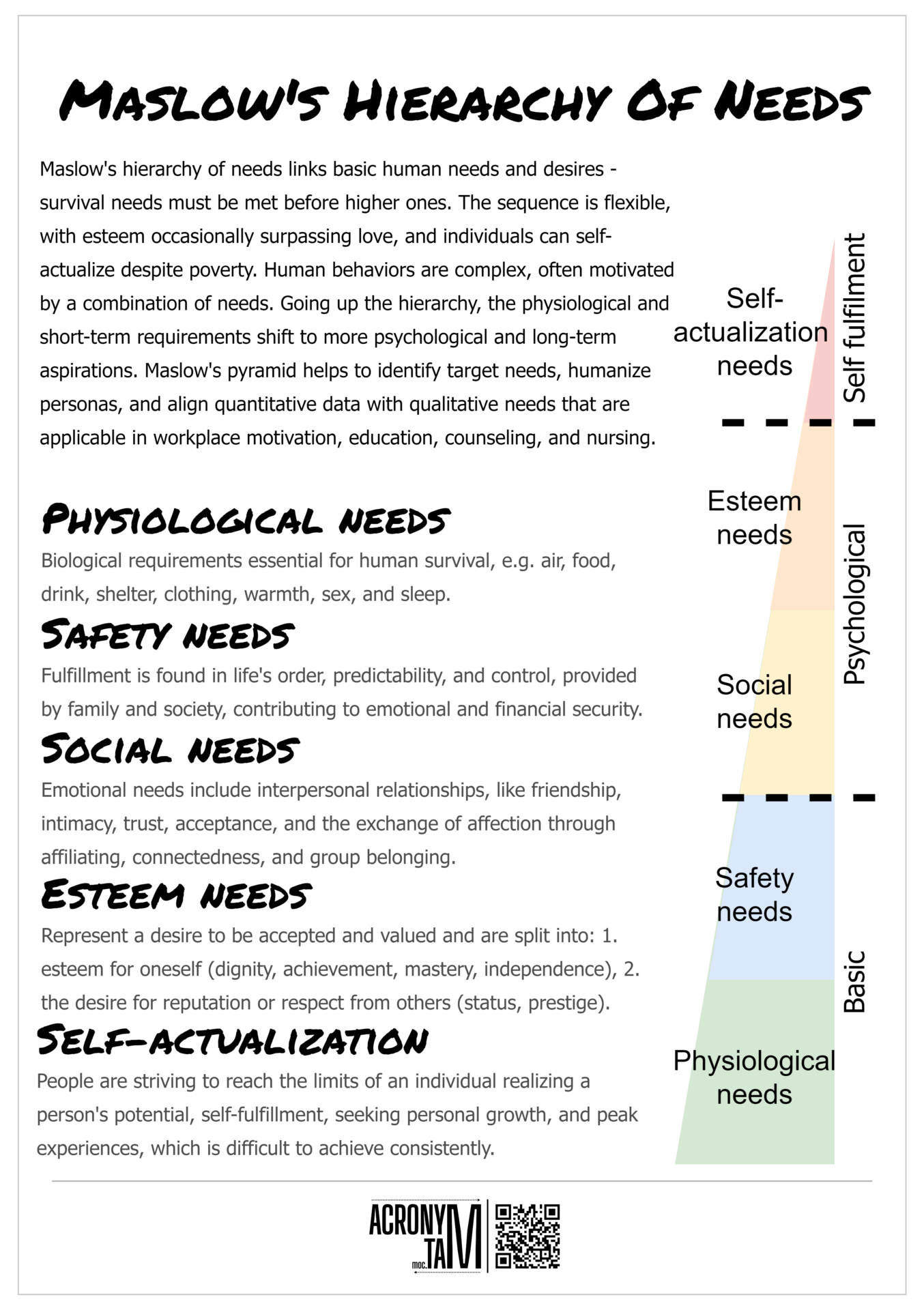Article
SWOT and TOWS Analysis
The SWOT analysis is a strong and simple strategy planning tool combining external and internal factors that can be helpful or harmful to an organization. Based on these the TOWS matrix combines the strengths and weaknesses with external threats and opportunities to create four types of strategies.
Strengths
The advantages over the others which the organization already possesses.
Weaknesses
Overview of the disadvantages in comparison to the competitors.
Opportunities
Things that can be done and may have a positive effect on the organization.
Threats
Things outside the control of the organization and could cause trouble.
WT Mini-mini
Defensive position to avoid threats and minimize weaknesses.
WO Mini-maxi
Mitigation of internal weaknesses by using external opportunities.
ST Maxi-mini
Using internal strengths for avoiding external threats.
SO Maxi-maxi
Capitalization on external opportunities by using internal strengths.













